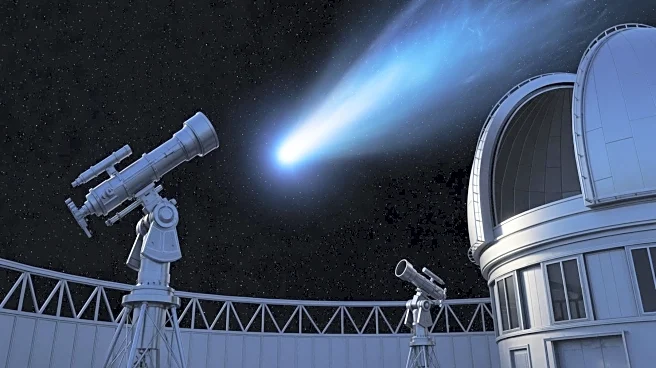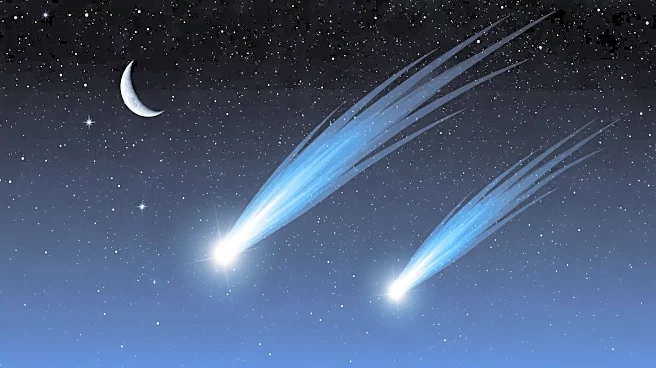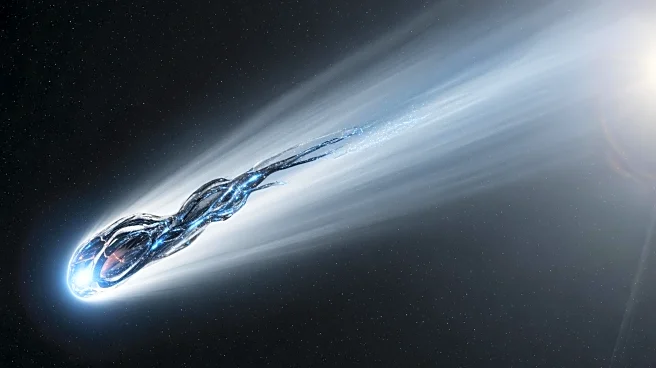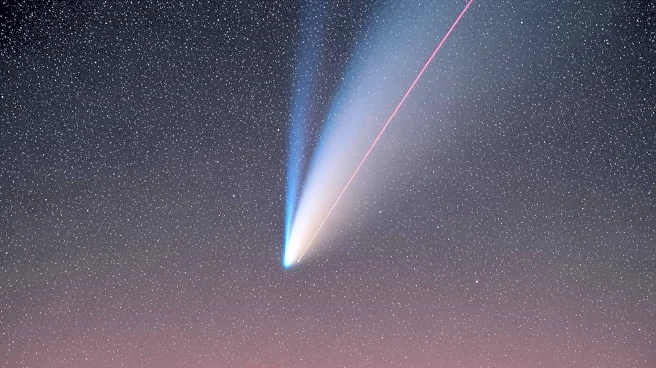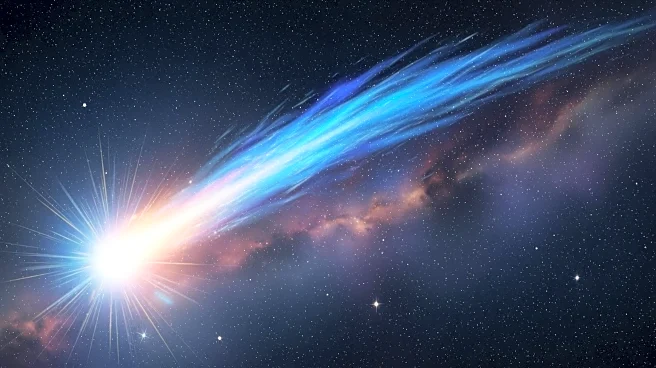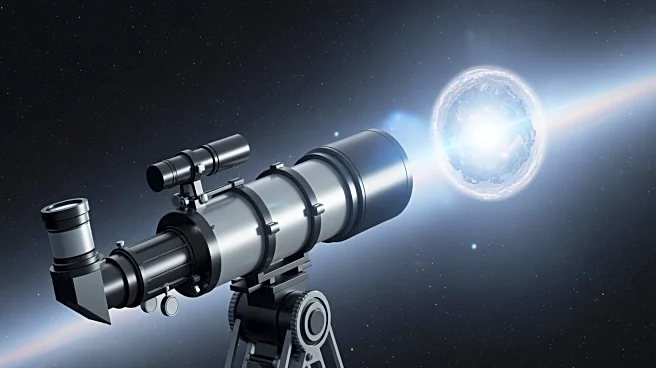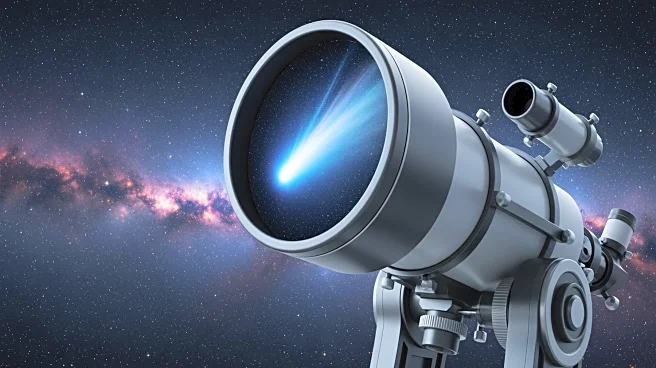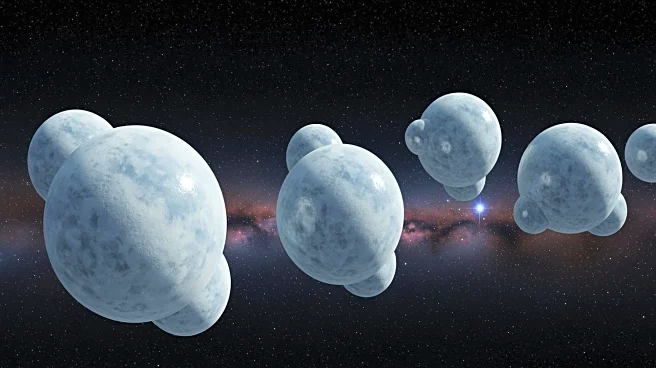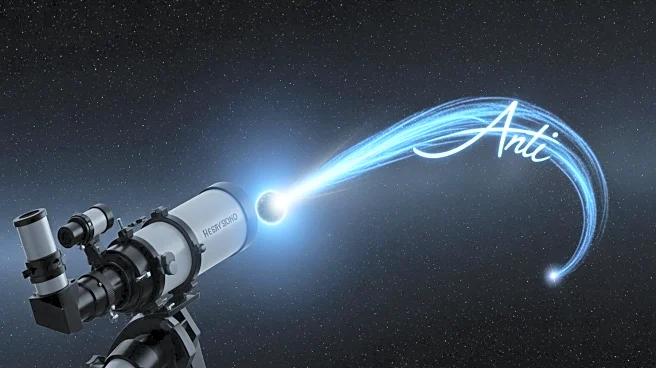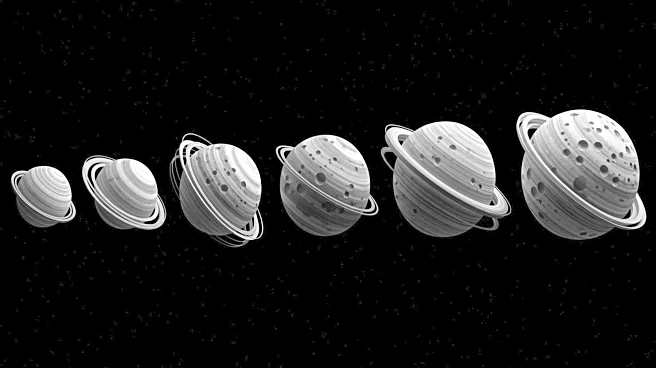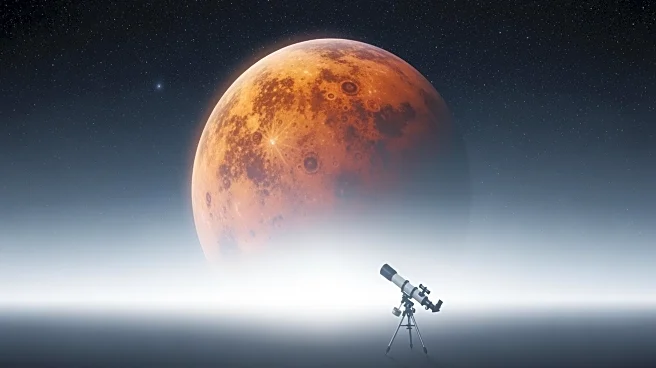What's Happening?
NASA scientists are investigating a sudden energy burst from the interstellar comet 3I/ATLAS, which has entered the solar system at a speed of over 200,000 km/h. This comet, the third confirmed interstellar visitor, has surprised researchers with its
carbon dioxide-rich emissions and hyperbolic trajectory. Observations suggest that 3I/ATLAS may contain material older than the Sun, offering insights into the formation of planets around distant stars. Despite speculation about the comet 'trying to communicate,' experts maintain that its activity is consistent with natural processes.
Why It's Important?
The study of 3I/ATLAS provides a unique opportunity to understand the composition and behavior of interstellar objects. The comet's unusual emissions and trajectory could offer valuable information about the chemistry and dynamics of planetary systems beyond our own. This research may lead to advancements in our understanding of how planets form and evolve in different star systems. Additionally, the comet's interaction with NASA's Europa Clipper spacecraft could allow scientists to sample particles from another star system, further expanding our knowledge of the universe.
What's Next?
As 3I/ATLAS approaches its closest point to the Sun, scientists expect it to become more active, potentially crossing paths with NASA's Europa Clipper spacecraft. This encounter could provide unprecedented data on interstellar particles. Researchers will continue to monitor the comet's progress using telescopes on Earth and in space, seeking to unravel the mysteries of its composition and behavior. The ongoing study of 3I/ATLAS may lead to new discoveries about the nature of interstellar objects and their role in the cosmos.
